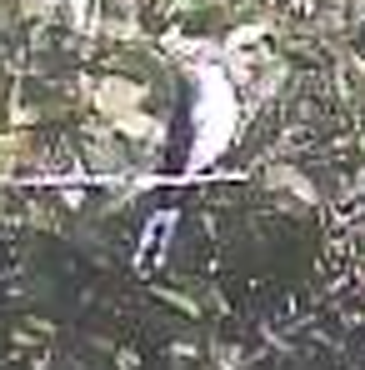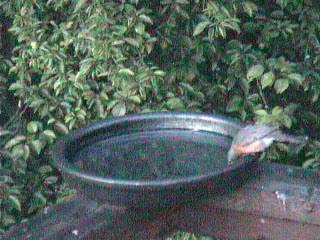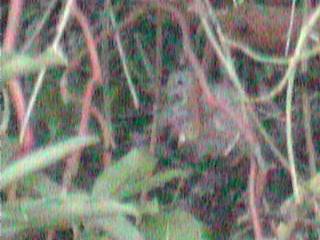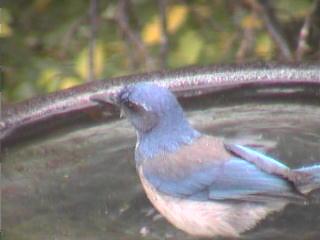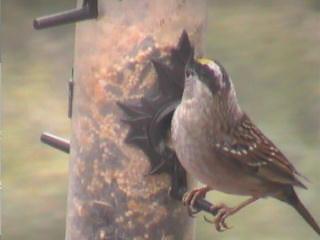Earlier this month I contacted Selma Glasscock at Welder. The correspondence follows.
Date: 2/09/2009 9:24am PST
From: Kay Loughman
To: Selma Glasscock
Cc: John Rappole
Subject: Welder Feeder contact person?
Hello Selma (and John),
Is there a way the CONE Welder observers can contact directly the person who is now taking care of the feeders for the project? I am asking because
1. sometime after 4pm yesterday, the green metal hopper feeder was “vandalized,” possibly by people, more likely by squirrels or raccoons. So the seed ports are now totally closed. That feeder was the only “hope” for the birds when the other feeders were not being filled.
2. the orange plastic feeder has come adrift from its mooring and appears to be banging against the fountain
3. the seed tray is empty, thanks to the attentions of a zillion Red-winged Blackbirds.
I know you are busy, so I hate to bother you. But if we could e-mail directly or even telephone the person doing the work, we wouldn’t have to disturb you with these little maintenance issues.
Thanks,
Kay Loughman
******
Date: 2/24/2009 6:41am PST
From: Selma Glasscock
To: Kay Loughman
Cc: John Rappole
Subject: Welder Feeder contact person?
Kay
I know such things are frustrating for CONE viewers, so you must ask them to be patient. It is important for all of you to understand that we (the Welder Foundation) DOES NOT have any staff person directly responsible for this project and WWF DOES NOT get paid to do this project. We are already over-burdened with our job responsibilities because of downsizing of staff over the past year. I know the CONE tasks may seem minimal to you, but they take valuable time out of our responsibilities to the Foundation and jobs during the workday and work week. My work day often begins about 5:30 a.m. and does not end usually until 7 p.m. – this may be 6-7 days a week.
We will do our best to keep them up and I am trying to find volunteers to assist, but since we are approximately 15 miles from the nearest community it is difficult. As a matter of fact, most of our volunteers live approximately 1 hour from the refuge. The CONE folks have found some funding to help us pay travel costs for volunteers, but that does not mean they will want to travel this far multiple days a week.
We will do the best we can to keep the project going.
Selma
Selma Glasscock, Ph.D., C.W.B.
Assistant Director, Welder Wildlife Foundation
P.O. Box 1400
Sinton, Texas 78387
361-364-2643
sglasscock@welderwildlife.org
www.welderwildlife.org
******
Date: 2/25/2009 8:38am PST
From: Kay Loughman
To: Selma Glasscock
Cc: John Rappole
Subject: Welder Feeder contact person?
Dear Selma,
Thank you for your message, which was informative if disheartening.
I hope you will understand the CONE viewers are all volunteers. We are not privy to detailed information (grants, memos of understanding, or protocols) about how the whole project works. So, although we read that the project is “collaborative,” we do not know the levels of committment or investment by each of the collaborators. We may not need to know those details; but our lack of knowledge could partly explain our concern when one part of the program doesn’t seem to be working. When the birds are not coming in because the feeders are empty or the fountain dirty, we cannot take photographs for John Rappole’s part of the project. [Of course, we do not know any more about Dr. Rappole’s investment in the project than we know about yours!]
From your note I infer that this project has become something of a hardship for Welder. If that is the case, your continuing efforts to support the project with bird food, volunteers, maintenance and oversight are an enormous contribution.
I sure all the CONE viewers join me in wishing you well,
Kay
******

